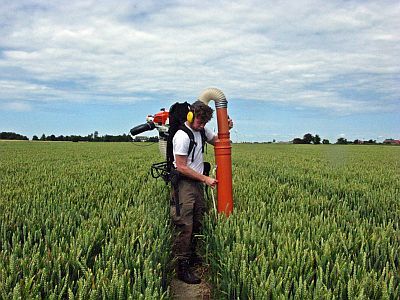| Project leader: | Prof. Prof. h. c. Dr. Ursula Siebert |
|---|---|
| Scientific staff: | Steffen Mumme |
| Project term: | Sept. 2014 until December 2016 |
| Sponsorship: | Deutscher Jagdverband e.V. |

Project description
Farmland bird populations are widely described to decrease. For example a local pheasant species (Phasianus colchicus ssp.) is in strong decline since 2007/2008 in many regions all over Germany. Specific reasons for this strong and negative population trend are still poorly understood and more research needs to be carried out to shed light onto this process.
Pheasant chicks essentially need protein-rich nutrition in their first weeks after hedging. The high demand for proteins is covered by an arthropod- / insect-rich diet in the first weeks. The decrease in arthropod availability and as well specific pathogens are discussed to decrease the chick survival and might be the key factors driving the strong population decline in farmland birds.
Aim of this research project is to measure arthropod biomass and -diversity in agricultural production landscapes. In detail the impact of four different land-use types in an agricultural dominated region in northern Germany on arthropod biomass and diversity are analyzed. The impact of arthropod availability as feeding resource of farmland birds e.g. pheasant will be evaluated.
During fieldwork we sample four different land-use types (cereal, vegetables, edges along farm roads and cattle pastures) on a weekly basis. This temporal replication is essential to include vegetation phenology and the highly variable weather conditions within the time span the chicks are hedging and growing. Sampling is carried out by using a specifically adjusted insect vacuum.


